Hans-Ole Vitus, founder of Vitus Audio, began playing drums at age 12, and soon thereafter developed his admiration of the gear being produced by a company founded by fellow Danes, Gryphon Audio Designs. By 18, he was studying electronics and, in 1995, began his design efforts of an amplifier, line-stage preamplifier and a phonostage. Vitus’ commercial unveiling, as it were, occurred in 2003, when these components were introduced to the public. Fast-forward to today, and Vitus Audio is regarded as one of the very best manufacturers of audio equipment available anywhere in the world.
I know Vitus Audio by their stellar reputation, and I am aware they make and market a $400,000 set of monoblocks. However, beyond a few audio shows, I admittedly am not well-versed as to what their gear actually sounds like. Needless to say, knowing and describing what anything in the Vitus Audio product lineup sounds like in my own personal system is akin to me penning my doctoral thesis on the velocity of celestial bodies in the third dimension. Being asked, therefore, if I would be interested in reviewing the Vitus Audio RI-101 Mk.II Reference integrated amplifier was an easy yes – and far less complicated than a doctorate.
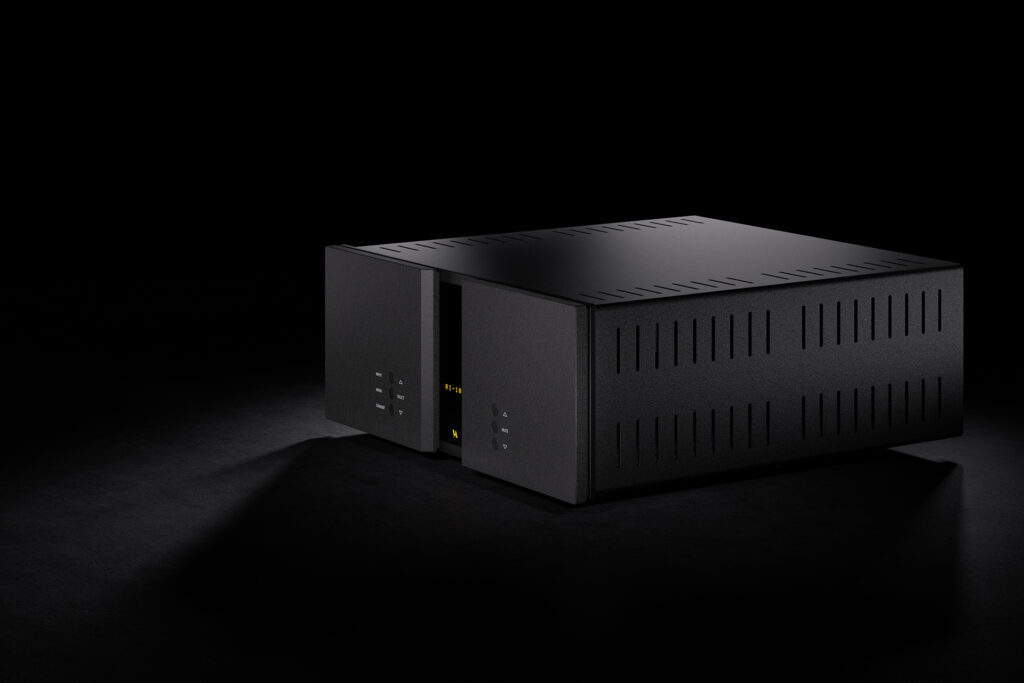
What Makes the Vitus Audio RI-101 Mk.II Integrated Amp Special?
- When the delivery truck backed up in my driveway and unloaded the shipment, I was immediately impressed. For a component in this price class, Vitus Audio could have taken the packaging route used by most manufacturers – a heavy-walled cardboard box. Not these guys. They shipped their RI-101 Mk.II Reference integrated amp in a wooden crate (optional for $440) with an ingenious locking system to hold the sides and top together. This locking system also facilitated breaking down the wooden carton to simplify component removal. There was even a built-in pallet, which enabled moving the crate with a fork truck or pallet jack. Rarely does one see such innovative packaging on an integrated amplifier priced in the low-to-mid-$20,000 price range.
- Abundant power is easily at hand with the Vitus RI-101 MK.II Reference integrated amp. The amplifier section has Class-AB architecture and is rated at 300 WPC at eight ohms and 600 WPC at four ohms. For the first eight watts at eight ohms, the RI-101 operates in full Class-A, then switches to Class-AB. At four ohms, it switches from Class-A to Class-AB at 16 watts. Driving virtually any speaker system in existence should present no problems whatsoever. Needless to say, headroom is in abundance with this amp.
- A factory- or dealer-installed DAC module is available. Input connections on the DAC include S/PDIF, AES/EBU, USB and an RJ45 Network jack. One DAC module is available with Roon (learn more about Roon from Brian Kahn here) preinstalled at a cost of $5,000. A second DAC module without Roon is available at a cost of $4,000. There are no options for a phonostage module.
- Volume attenuation in the Vitus RI-101 Mk.II has a somewhat unique design. A series of fixed resistors controls the volume, with relays switching between the various resistors. When the volume is altered, the new resistor is loaded, and then the resistor no longer required is removed. There is a very short time for this process to take place, which may alter volume attenuation. By “short time,” frankly, I never even noticed it happening. Basically, I found changing the volume seamless. There is, however, a noticeable “click” as the volume is increased and decreased in one-decibel steps. Vitus Audio claims this type of volume control gives a sound that is superior to more traditional methods.
- Despite being the entry level in the Vitus product line, the RI-101 Mk.II shares some of the same technology with the more expensive Vitus Signature and Masterpiece series of components. For instance, Vitus typically prefers not to use a toroidal transformer. Instead, they use one of their own designs, which is wound by preferred vendors located in Denmark. In certain instances, transformers, resistors and capacitors are shared by all three product categories.
- The cabinet in the Vitus Audio RI-101 Mk.II is representative of Danish minimalism. The front faceplate is divided into left and right raised panels. On the left panel are three small vertical buttons to control input choices and other similar component functions. On the right raised panel are three vertical buttons for volume up and down, as well as mute. The recessed middle panel has an illuminated section for source selections and the Vitus Audio logo. The sources may be given custom names, such as DAC and phono to replace Line 1 and Line 2.
- In a nod to styling sophistication, the standard faceplate colors are black, white and silver. For a slight additional cost, Titanium Orange, Titanium Grey and Dark Champagne colors are also available. I have seen the Titanium Orange and found it to look so good, if my review sample had been this color, I might not have returned the component ever.
- A remote is included, which controls power, volume, mute and source.
Why Should You Care about the Vitus Audio RI-101 Mk.II Integrated Amp?
Integrated amplifiers are continuing to be improved and offer far better sonic quality than even as recently as five or 10 years ago. Vitus Audio is one of the more highly regarded high-performance audio manufacturers available. If the $21,250 price is in the user’s price range, they will be treated to a component that has other members of the family close to, and sometimes even well into, six-figure territory. This integrated amp is designed to be an industry leader for years to come after purchase. If the purchase cost is likewise amortized over, say, five or 10 years, the overall expenditure suddenly becomes very manageable. Best of all, sonically, the RI-101 Mk.II is a standout.
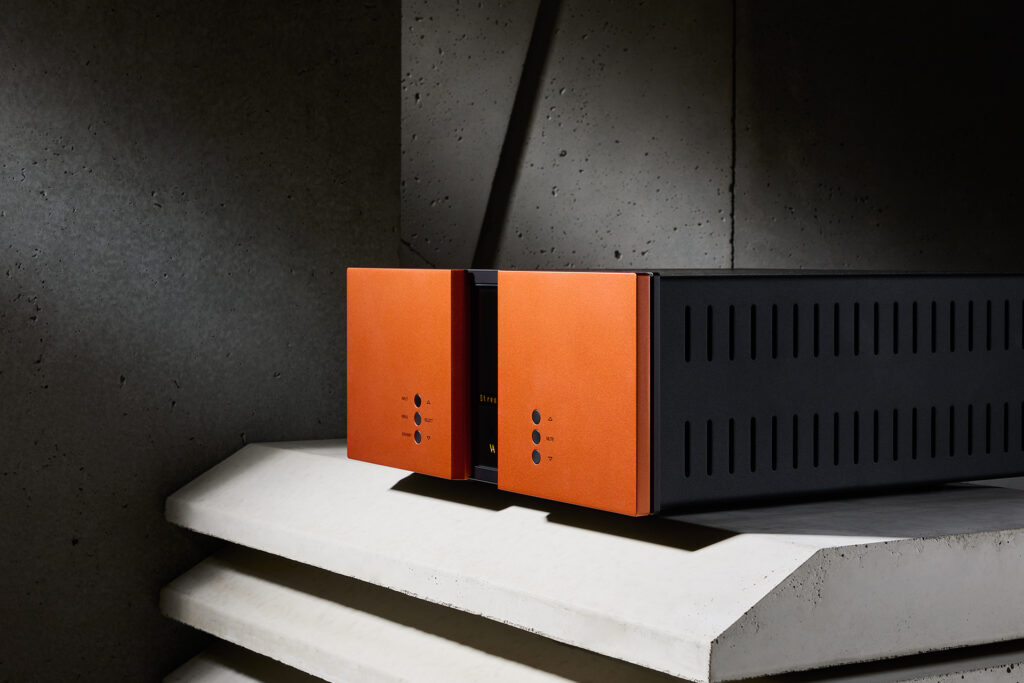
What You Might Not Like About the Vitus Audio RI-101 MK.II Integrated Amp
- There are only one set of speaker terminals on the rear of the cabinet. Likewise, connecting and independently controlling two sets of speakers is not possible.
- The screen is quite small and, while the brightness can be adjusted, the size cannot.Because of how far away I am from the equipment rack, it was impossible for me to read the display screen. Had the volume display become enlarged during adjustment and then returned to normal size, it would have been very helpful. I should, in all fairness, mention this problem exists with almost every component I review and have in my current reference system. Some of the display screens in my reference system are legible from my listening position. Others are not.
- There are no provisions for balance control, loudness compensation or room correction, which some other competitors’ models offer.
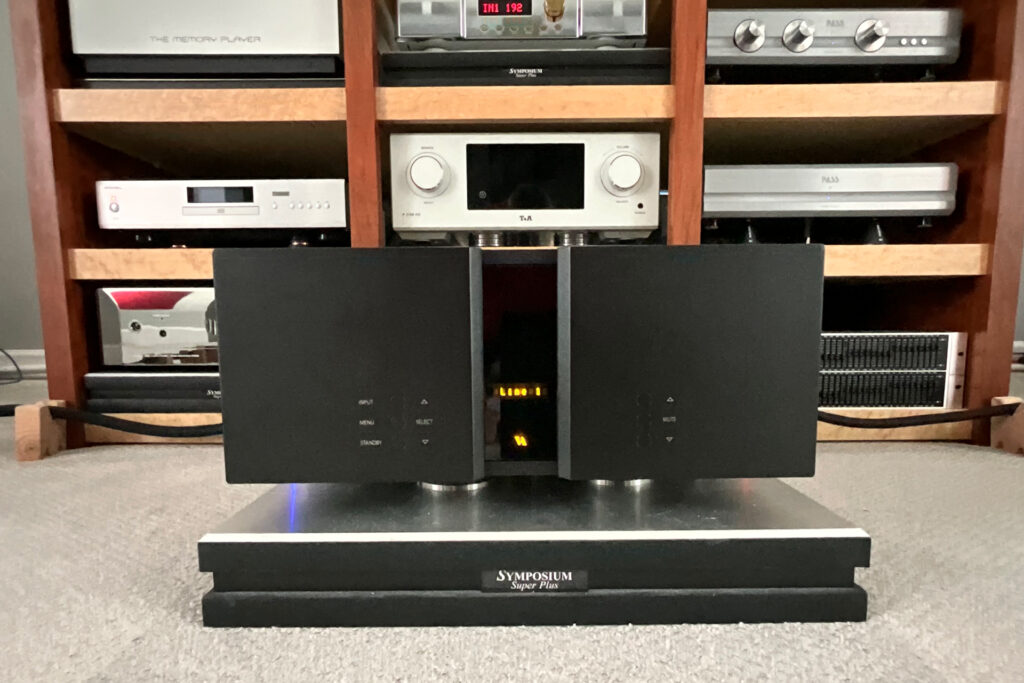
Listening to the Vitus Audio RI-101 Mk.II Integrated Amp …
Normally, my practice is to hook a new component up, load my server with several days’ worth of songs, push play (with the volume set on very low) and come back to my audio room in 24 hours. This is an effort to allow the component more than sufficient time to reach thermal stability. This time, however, I cued up some favorite tracks and was, quite surprisingly, highly impressed from the first note played. I immediately noticed an incredible bass presentation. It was powerful, yes, but not in an intrusive way. As I listened, what really impressed me was not only the quality of the bass, but how it coupled with the mids and did not overrun the highs. I have heard some really fantastic bass with the other three integrated amps I have reviewed. The Vitus Audio RI-101 Mk.II, at this point anyway, delivered the best bass response of any review sample I have auditioned.
The next thing that I noticed sonically was the imaging. For the most part, the other components I have reviewed had very impressive imaging, but not quite on par with my reference T+A A 3000 HV power amp (read my review) and T+A P 3100 HV preamp. While the front to back imaging was mostly equal, the lateral side to side imaging on the review samples was not quite up to par with my reference gear. Such was not the case with the RI-101. Vitus Audio has an integrated amp that in every way images as well as anything I have ever had in my audio room, including my permanent system. I find this to be very impressive.
Beyond those two, and speaking very generally, there was a definite authority to the overall presentation. Not especially overly dynamic or forward, but there was an almost intangible yet full-bodied presence I really enjoyed. To tell the truth, it reminded me of what I hear with live music. There was an authority in the musical presentation mostly lacking in a lot of gear I audition. This authority, by contrast, did not degrade clarity, accuracy, or even dynamics. In fact, there were several times I would have sworn the vocalists were standing and singing right in front of me. If there was any one aspect of the overall sonics I would change, I would like to see the midrange a little livelier and more exciting. The Vitus Audio RI-101 Mk.II did have excellent mids, but I would have preferred them to be just ever so slightly more “energetic.” This is, naturally, a personal preference and in no way a denigration of the sonics. In all honesty, this integrated amp sounded magnificent.
When The Who released Tommy in 1969, they were overjoyed by the album’s success. Having a massively popular global hit record was wonderful, but also created a problem – what to do as a follow-up release? The album Live at Leeds was the answer, and the track “Magic Bus” is the subject of our evaluation. This work captured something that studio releases by The Who simply did not – the energetic, explosive nature of live performances by the band. The track, lasting almost eight minutes, begins with claves, an instrument consisting of pairs of small wooden sticks, which make a high-pitched clicking sound when struck together. With the Vitus Audio RI-101 Mk.II, this clicking sound was very distinctive and, likely due to the integrated amp’s retrieval of detail, there was a noticeable resonance in the decay of each stick strike. Pete Townshend absolutely sizzles on the guitar and his chords were presented by the Vitus amp in a mass of recognizable fury. And, of course, Keith Moon does what Keith Moon always did: plays the drums with an overwhelming level of ferocity, yet never getting outside of the beat. His drum work was simply magnificently portrayed by the Vitus Audio R1-101 Mk. II. Roger Daltrey really delivers on his vocal presentation and, here again, sounds pervasively natural. Just barely above the undercurrent is John Entwistle’s bass: sometimes heard, sometimes felt, but always there. All in all, the Vitus Audio RI-101 Mk.II delivered a remarkably accurate sonic presentation, which captured all elements of the explosive, full-throttle nature of live performances by The Who.
Almost anyone who grew up in the Southeast has heard the term Southern Rock (learn more here). Most will associate this subgenre with bands like Lynyrd Skynyrd and the Allman Brothers Band. Those in the know are also aware of a group from Spartanburg, South Carolina, and only about 80 miles from my place of birth – a group called the Marshall Tucker Band. They were squarely positioned at the forefront as one of the unquestionable pioneers of Southern Rock. One of their more notable hits was the 1973 track “Can’t You See,” from their landmark first release, The Marshall Tucker Band. Manifestly, this is a somewhat blues-oriented, somewhat soulful, somewhat heartfelt Southern Rock anthem. This emotional character, often difficult to hear on an audio system, and certainly an intangible when it can be heard, is accurately and eminently presented by the Vitus Audio RI-101 Mk.II. This track exemplifies the presence I noticed, and perhaps also felt, as I listened to a wide variety of music. Vocalist Doug Gray’s singing was easily discerned by the Vitus integrated amp, and the mournful nature of his voice resonated throughout the track. Musically, the flute and guitar riffs melded throughout and played off each other in an easily recognizable musical portrayal. For anyone who might be somewhat curious about Southern Rock, “Can’t You See” by the Marshall Tucker Band is a great place to begin a search. Fortunately, the Vitus Audio RI-101 made it sound much better.
Will the Vitus Audio RI-101 Mk.II Integrated Amplifier Hold Its Value?
Can I just say “absolutely” and be done? Vitus Audio designs their gear to last for many years. As this is an integrated amp, the amplifier and preamplifier sections should remain both modern and innovative for quite some time. In looking at the used gear sites, there was hardly anything by Vitus Audio for sale, which is understandable, as it is a low-volume, very luxury, imported high-end audiophile product. I did not see any, not even one of the older version RI-101 integrated components, let alone the Mk.II version, for sale. To me, this means these devices are not being sold because they are still in use by satisfied owners.
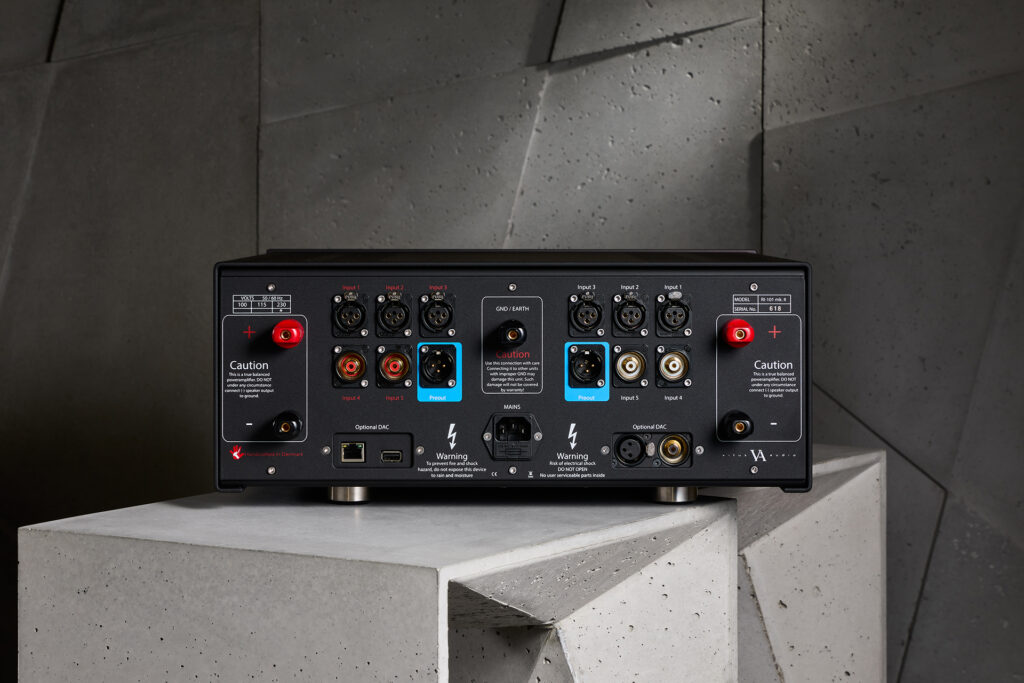
What is the Competition For the Vitus Audio RI-101 Mk.II Integrated Amp?
It seems only fair to first list the Gryphon Diablo 333 Integrated Amp (read review here). Priced at $24,900, the Diablo is also a product of Denmark and was the aspirational brand Hans-Ole Vitus used as a benchmark for his own designs. Both these products are incredibly powerful, are very similarly equipped, and have amazingly similar sonics. I could be easily satisfied with either one. One difference is the Diablo has the capability for a DAC and a phonostage – the RI-101 Mk.II only supports a DAC. Another difference is the Diablo has 38dB of gain, so it gets very loud, very quickly. The Vitus Audio RI-101 Mk.II tends to be more linear in its amplitude adjustments. Not that it won’t play very loudly – by all means, it will – it just requires a little more volume adjustment. Beyond these very minor differences, these two components are vastly more alike than dissimilar.
Another worthy competitor is the CH Precision I1 Universal Integrated Amp (read review here). Priced considerably higher at $38,000, the I1 also comes with a DAC, whereas the Vitus Audio RI-101 Mk.II adds as much as $5,000 for this digital option. And, while the CH Precision I1 will fill almost any room with sound, it comes standard with 100 WPC at eight ohms and 175 WPC at four ohms. Clearly not in the league with Vitus Audio but, again, the CH Precision can play sufficiently loudly to be enjoyed. What sets the CH Precision apart are the user-adjustable Global Feedback Settings and all the many modifications and add-on options that may be utilized. Sonically, once again, the CH Precision is very similar to the Vitus Audio integrated amp.
Last is another very similar offering, the T+A PA 3100 HV Integrated Amplifier (read review here). Once again, more alike than not alike is a very apt description. The T+A integrated amp features 300 WPC at eight ohms (380 watts intermittent) and 500 WPC (700 intermittent) at four ohms. While there is no option for a DAC module, there is an optional $1,700 phonostage module added onto the $24,800 retail price of the integrated amp. Once again, and at the risk of being redundant, the sonics of the Vitus Audio RI-101 MK.II and the T+A PA 3100 HV integrated amplifier are very similar. Both tend to lean towards a near-zero negative global feedback, so the presentation, generally speaking, is more on the lively side and less warm, syrupy sound. I did find, however, the T+A PA 3100 HV to have a slightly more energetic midrange and upper-end presentation. Notably different, the T+A PA 3100 HV includes balance control, on-board room correction and two sets of terminals for A and B speakers. Here again, I could be very happy with this integrated amp. In fact, I could be happy with any of the competitors listed.
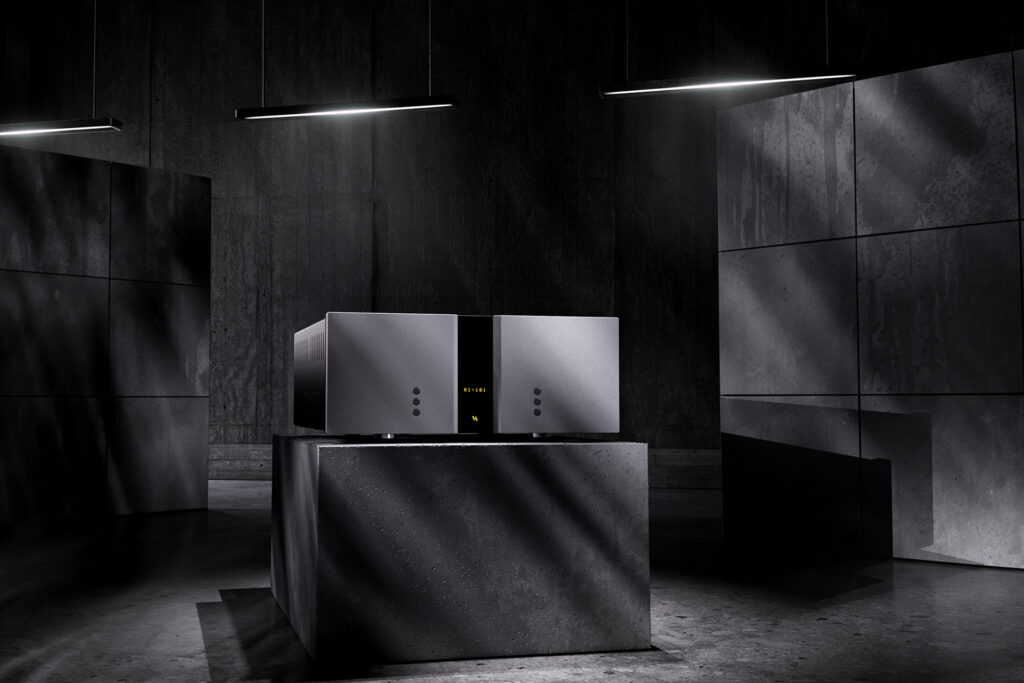
Final Thoughts on the Vitus Audio RI-101 MK.II Integrated Amplifier …
Throughout my time with this very impressive integrated amp, I kept wondering what the massive, over-the-top $400,000 monoblocks and the accompanying preamp sounded like. If I am getting this level of performance and audio quality from a device that retails for less than $22,000, what magnificence would be in store for me with Vitus’ all-out assault on sonic perfection?I’ll have to ponder this question, but what I can state categorically for sure is that this is one of, if not the most, impressive integrated amplifiers I have heard anywhere and, realistically, the best one I have thus far auditioned in my audio room.
When I look at the retail investment I have in an amplifier, preamplifier, DAC and, of course, the associated power cords, AES/EBU cable and the interconnects, and I can get virtually the same level of performance from a retail price of $21,250 plus $5,000 for the DAC module, I sit and shake my head wondering why I didn’t look at this integrated amp sooner. Even the $26,250 investment is substantially less than the value of my separates, with nearly equal sonics.
By any measure, the Vitus Audio RI-101 Mk.II Reference integrated amplifier is a standout piece of audiophile equipment. Given a concomitant level of associated gear, speakers and cabling, a five-figure investment could easily rival a deep-six-figure system and deliver equally pleasing sonics. I see this integrated amp as checking all the boxes – incredible power to drive almost any speaker, a variety of connection options, ease of usability, an incredibly forward-thinking design, and a legacy of quality from one of the most respected audiophile component manufacturers on the planet. That I recommend the Vitus Audio RI-101 Mk.II Reference integrated amplifier should be obvious. In fact, anyone considering an amp/preamp or integrated component would be very wise to audition this device. It has all the ingredients for a slack-jawed, mic-drop moment and will easily bring untold hours of listening pleasure. From an audio perspective, what can be better than musical excellence?




Nice review and product, but…Doug Gray’s vocals on Can’t you See?…that’s not him but the late great Toy Caldwell! 😉
Nice review and product…but…regarding MTB, it’s not Doug Gary singing Can’t You See but the late great Toy Caldwell! 😉